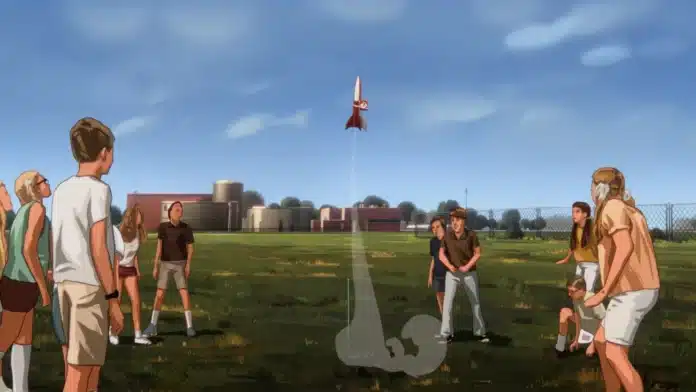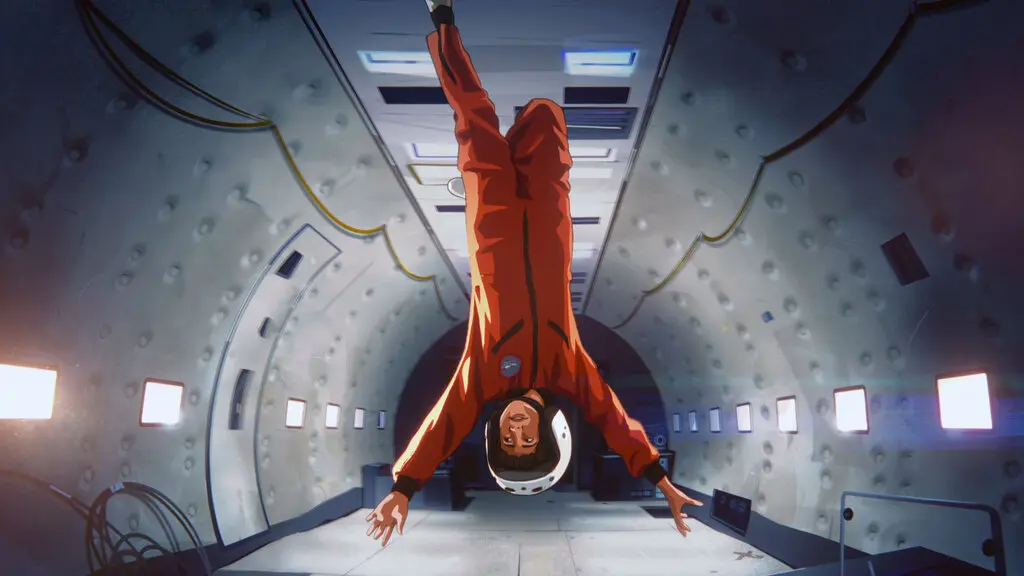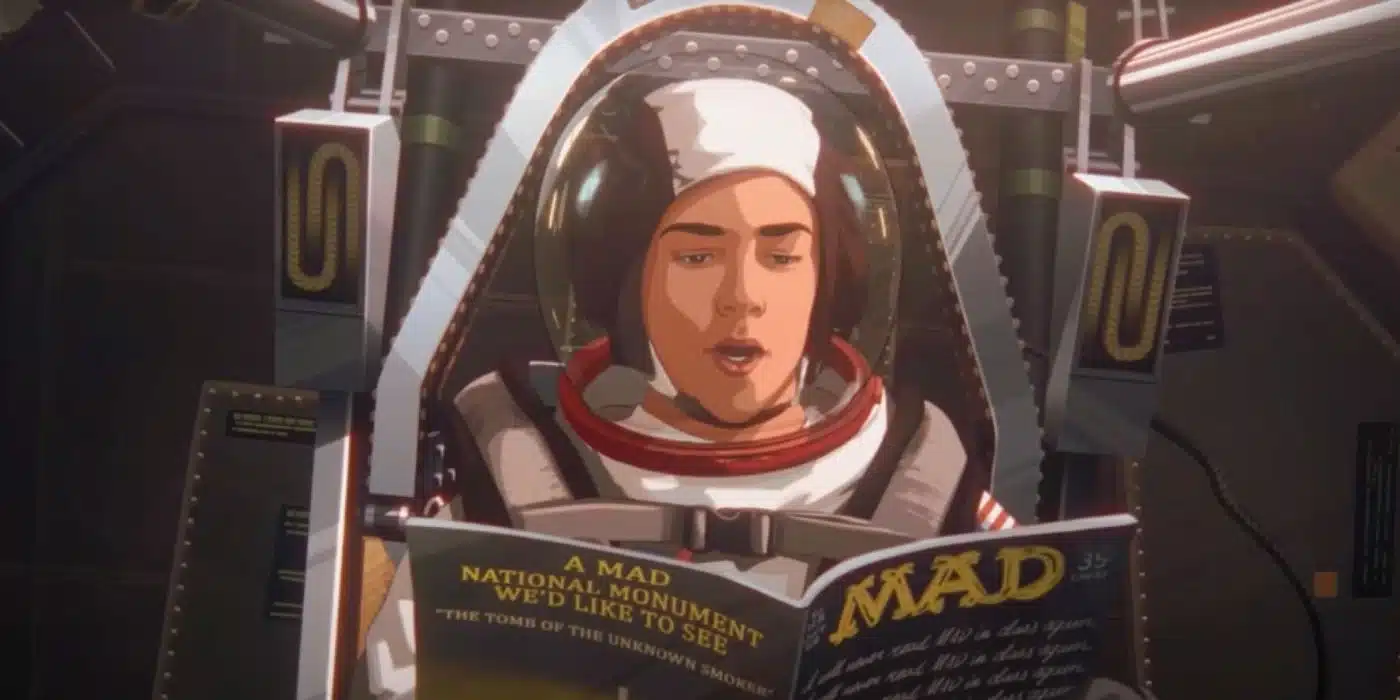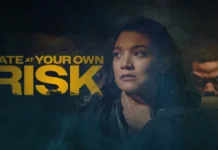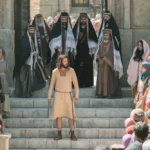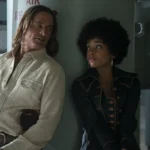With some tongue-in-cheek revisionism, Richard Linklater’s latest animated film portrays the narrative of the lunar landing. A man tells anecdotes about his life as a 10-year-old youngster in 1969 Houston, blending nostalgic memories with a fantasy depiction of a moon mission. According to Apollo 10 1/2, the first person to land on the Moon was Stanley (played by Milo Coy), a kid from Houston who got the chance because he wrote a few good science reports in class, and won the Presidential Physical Fitness Award three years in a row.
If cinema is one of the only art forms in which you must feel it with more than one sense, then Richard Linklater’s ‘Apollo 10 1/2: A Space Age Childhood’ demands that you fully immerse yourself. But, unfortunately, it’s also not that difficult to accomplish.
The film is set at the height of the space competition and tells the story of the 1969 Apollo 11 Moon landing through the eyes of a little boy.
‘Apollo 10 1/2: A Space Age Childhood‘ is based on Linklater’s own childhood in Houston, as well as the childhoods of his friends and family. The plot is quite unique in this way. The fact that the picture is about a voyage to the Moon makes it truly universal. Here’s everything you need to know about ‘Apollo 10 1/2: A Space Age Childhood’s finale.
Must Read: Netflix’s Comedy Movie ‘The Bubble’ (2022) Review and Ending Explained
Plot Synopsis for “Apollo 10 1/2: A Space Age Childhood” Movie
The animation in ‘Apollo 10 1/2: A Space Age Childhood’ is visually similar to Linklater’s own films, ‘Waking Life’ and ‘A Scanner Darkly.’ However, it is much more fun here than in the previous two films, which reflects the story.
In the spring of 1969, the film opens on the Ed White Elementary School playground in El Lago, Texas. Stanley or Stan is the story’s narrator (Jack Black). His younger self (Milo Coy) goes to Ed White, where he is approached by two men in suits and sunglasses.
They transport him to a secure place and inform Stan that his country requires his assistance. They’re from NASA, and they’ve developed a smaller-than-normal lunar module that can only suit a boy Stan’s age and stature.
They needed to test their machines and computations one last time before the Apollo 11 mission because the space race has heated up. As a result, they’ve chosen to send a boy to the Moon’s surface using the smaller module.
Stan, being pragmatic, wonders why a chimp isn’t being sent instead. Stan gets exasperated when one of the NASA officials (Zachary Levi) tells him that between the chimp and him, he knows more English words. Stan’s science reports, plus the fact that he has won not one, not two, but three consecutive yearly Presidential Physical Fitness Awards, have obviously impressed NASA.
After Stan accepts, the other NASA official (Glen Powell) informs Stan that the mission would be kept completely confidential. Stan’s training will begin at the conclusion of the school year, ostensibly when he attends a summer camp. He certainly can’t tell anyone, even his family, about this.
The plot turns just as Stan is about to throw up during his training, and the focus shifts to his home life. The narration is crucial to the success of the film. It is the plot’s main driving factor. Stan, who is now older, reflects on his life in the late 1960s.
His father works at NASA, as do many of the people in the area. Stan’s father is the chief of NASA’s shipping and receiving department, while Stan’s mother is a graduate student who looks after the family.
Stan is the youngest of six brothers and sisters. Vicky, Jana, and Stephanie are his older sisters, and Steve and Greg are his older brothers. Stan’s father is extremely frugal, and his children frequently find him to be a source of shame. Other character groupings introduced include people from Stan’s neighbourhood, his grandparents on both sides, his father’s colleagues, Stan’s pals, and other members of his baseball team, to name a few.
Stan and his siblings grow up in the midst of all of this, during one of the most pivotal periods in American history. Before returning to the point where Stan throws up, the film spends about 50 minutes exclusively exploring various aspects of Stan’s and his family’s lives. For example, older Stan claims that he went to the Moon in secret on a mission dubbed Apollo 10 1/2 while the rest of the world awaited the Apollo 11 voyage with bated breath.
‘Apollo 10 1/2: A Space Age Childhood’ : Will ‘Stan’ Really Reached on the Moon?
Linklater has constructed a wonderful world, and Stan is our window into it. It just so happens to take place during one of the most pivotal periods in human history. Through the eyes of a young boy with a vivid imagination, we see the first-ever Moon landing.
He listens to the conversations about everything that is going on around him and absorbs it like a sponge before letting it all out in his own creative realm. Stan spins a reality in which he is approached by two government operatives and asked to step up when his country needs him on one of his idle days at the playground in front of his school.
Stan spends his time at Camp Grizzly, an outdoor camp near Lake Traverse, Michigan, contemplating astronaut training. He’s read enough about it and heard enough about it to have a rudimentary understanding of how things work, so he fancies himself preparing for his approaching launch. He’s even fantasised about going to the Moon and returning.
After all, space travel had been attempted previously, but his mental reconstruction lacked the specifics of his other fantasies. The gap in his imagination is only filled by the information he receives when he watches Apollo 11’s journey on television. This contains Neil Armstrong’s walk on the Moon and the landing.
No, Stan doesn’t really get to the Moon, and the Apollo 112 Mission doesn’t really happen. However, he speaks for millions of people around the world who are watching the moon landing and imagining themselves inside Armstrong’s suit.
The moon landing was not only a significant historical and scientific event, but it also broadened the span of our collective imagination. In the perspective of the United States, it marked the pinnacle of the country’s wealth and progress since World War II ended.
While the film is full of nostalgia and wistfulness for a bygone period, it does not shy away from presenting other pressing topics of the time, such as the Vietnam War, political assassinations, and the Civil Rights Movement.
However, as Older Stan confesses, he grew up in a suburb, where most of the aforementioned items didn’t exist outside of news broadcasts on television. Vicky, the eldest of the siblings, is the one exception. She is well-informed about the situation of the globe and appears to have developed a political viewpoint distinct from that of her conservative parents.
Only when people on TV criticise the Apollo 11 Mission as being extravagant for a country that could have spent the money on items closer to Earth does Stan and his other siblings become concerned about politics.
These viewpoints irritate Stan and the others, and their feelings are reinforced by their parents’ disregard of the criticism. Even Vicky, who agrees with the sceptics, watches Armstrong descend from the module with awe and hope. She, like Stan, might fantasise about walking on the Moon.
‘Apollo 10 1/2: A Space Age Childhood’ is now streaming on Netflix.
A coming of age story… the way only Richard Linklater could tell it. @glenpowell @glenpowell & @ZacharyLevi star in Apollo 10 1/2: A Space Age Childhood premiering April 1. pic.twitter.com/AbzjQ5CEbd
— Netflix (@netflix) March 7, 2022


